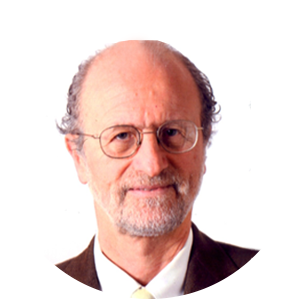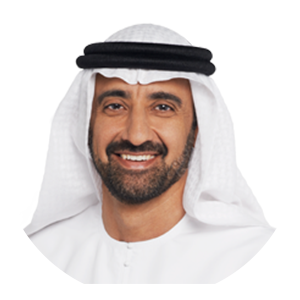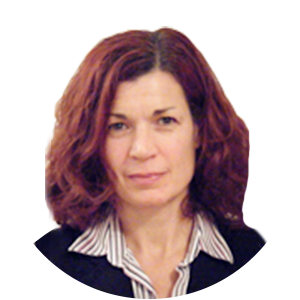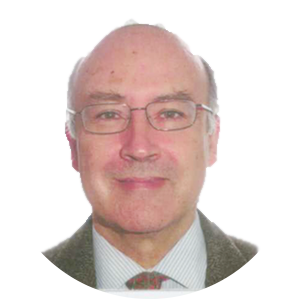| Speakers |
|---|
Dr. Amal Al QubaisiDirector General Abu Dhabi Education Council |
Dr. Arif Al-HammadiExecutive Director for the Higher Education Sector, ADEC Executive Vice President, Khalifa University |
Dr. Mohammed Al-MuallaSenior Vice President, Research & Development, Khalifa University |
 1.
1. 2.
2. 3.
3. 4.
4. 5.
5.The "knowledge triangle" of higher education, research and innovation, their inter-relationship, interworking and mutuality, is explored. The two-way, mutually beneficial and supportive relationships and interactions, synergistic to the point of symbiosis, are recognised and it is noted that no one aspect can be as strong and effective as it needs to be without the others. No nation with aspirations to be a significant player in the emerging knowledge economy can determine to be ‹good› at just one: excellence in any requires commitment to excellence in all. A strong and fully effective knowledge triangle is crucial for success – in science of course, but equally for the economy and society we wish and need to have.To present, illustrate and support this assertion exemplars and illustrative outcomes will be provided from some high performing systems around the world.
Sir John O'Reilly was appointed Director General of Knowledge and Innovation in February 2013. John came from Cranfield University where he was Vice Chancellor from December 2006.Prior to that John was Chief Executive of the Engineering and Physical Sciences Research Council
(EPSRC) and has held academic posts at Essex, Bangor and UCL universities. He worked at the Royal Radar Establishment, Post Office Research Centre, BT Laboratories and with the small and medium-sized enterprises sector (IDB Ltd, CAST Ltd).John is a board member of ERA Foundation, chairman of UK Interoperability Standards (NICC) and a commissioner of the Royal Commission for the Exhibition of 1851. His international roles include serving on the Board of the Agency
for Science, Technology and Research (A*STAR) and as chair of the Science and Engineering Research Council (SERC) of Singapore and as chair of the systems and communications engineering panel for the European Research Council (ERC).He is an international member of Académie Hassan II des Sciences et Techniques and of Academia das Ciências de Lisboa. He is also a member of the Board of Trustees of the Royal Aeronautical Society, a past president of the Institute of Electrical Engineers (now the Institute of Engineering and Technology) and a Fellow and former member of council of the Royal Academy of Engineering. John was created Knight Bachelor in 2007 for contributions to science.
Scuola Superiore Sant'Anna (SSSA), Italy
A Grand Challenge for innovative and creative graduate students
Modern robotics combines technology and science: robotics technology allows to build new machines, smart and helpful in real-life scenarios; robotics science makes use of robotic systems to validate scientific models, or even to generate new scientific knowledge.
Biorobotics is an emerging area of robotics pursuing an integrated approach to the study of robots and biological
systems. A key aspect of biorobotics is the effort to model biological systems by methods and technology of
engineering and robotics, with the two-fold aim of:
1) designing high performance machines for biomedical applications;
2) designing bio-inspired machines based on the concept of embodied intelligence for different (often
non biomedical) applications. Humans are at the centre of the scientific interest and technological applications of
biorobotics, which therefore can be defined as “robotics in the service of humans”. Biorobotics is also a deeply
interdisciplinary field, where diverse technologies converge, such as: advanced mechanical design and
components; materials; sensing; actuation; micro-, precision and ultra-precision fabrication technologies;
embedded control; ITC technologies; human-machine interfaces; power supply; etc. At the same time, biorobotics
is deeply transdisciplinary, since it involves knowledge and methods from disciplines and areas outside the
technology field, such as biology, medicine, economy, sociology, anthropology, psychology, philosophy, and ethics.
This lecture briefly introduces the theoretical framework of biorobotics and discusses its many implications and
applications, including clinical and industrial, with particular attention to bio-inspired robots and to the biomedical
field.
Paolo Dario is Professor of Biomedical Robotics, Founding Director of The BioRobotics Institute of the Scuola Superiore Sant'Anna (SSSA), Pisa, Italy and Visiting Professor in many international universities. He is currently serving as Visiting Chief Researcher, Biomedical Engineering and Robotics, at KUSTAR, UAE. Professor Dario coordinates the PhD Program in BioRobotics at SSSA, with a total of about 90 PhD candidates. His main research interests are in the fields of bio-robotics, medical robotics, bio-mechatronics and micro/nano biomedical engineering. He is the coordinator of many national and European projects, the author of more than 300 ISI journal papers, the recipient of 25+ international patents and the founders of many start-up companies. He has been and is Editor-in-Chief, Associate Editor and member of the Editorial Board of many international journals, and the program chair and plenary invited speaker in many international conferences. Prof. Dario has served as President of the IEEE Robotics and Automation Society in the years 2002-2003, he is an IEEE Fellow, a Fellow of the European Society on Medical and Biological Engineering, and a recipient of many honors and awards, such as the Joseph Engelberger Award for Pioneer Research in Biomedical Robotics and of the IEEE RAS George Saridis Leadership Award in Robotics and Automation for 2014.
Chief Executive Officer, Aerospace & Engineering Services, Mubadala, UAE
H.E. Mr. Homaid Al Shemmari is Chief Executive Officer, Aerospace & Engineering Services, with oversight of Mubadala's aerospace, communications technology and defense services portfolios.Before joining Mubadala, H.E. Mr. Al Shemmari was a Lieutenant Colonel in the UAE Armed Forces, with involvement in military aviation, maintenance, procurement and logistics.Board Positions: Chairman of Abu Dhabi Ship Building Company, Strata Manufacturing, Maximus Air Cargo, Abu Dhabi Aircraft Technologies, Advanced Military Maintenance, Repair and Overhaul Center (AMMROC) and ADASI; board member of Mubadala Petroleum, Abu Dhabi Future Energy Company (Masdar), Abu Dhabi Aviation, Royal Jet, GLOBALFOUNDRIES and Piaggio Aero Industries Spa.
Toumaz Group, UK
The majority of patients in hospital have measurements of their vital signs taken and recorded only intermittently; typically at 6 or 8 hourly intervals. As a result, patient deterioration can occur to a point of serious consequence before it is recognized by the clinical staff. It is neither practical nor desirable to attach all patients to static monitors; such a solution would be very expensive, and would confine patients to bed. This talk will outline recent advances in ultra-low power semiconductors, which are enabling a new wave of miniature, wearable and wireless healthcare devices. Such devices are already being deployed within hospitals to increase patient safety by allowing near-continuous monitoring of a much wider patient population than previously possible. The challenges of, and solutions to monitoring ambulatory patients will be described, and future applications and ongoing research topics will also be discussed. Finally, the talk will outline a vision where these mobile healthcare devices could also be deployed outside hospital to enable a truly mobile and personalised healthcare revolution.
Alison has over 25 years of experience in semiconductor design, particularly in the field of ultra-low power wireless communication. She joined Toumaz in 2001 as Technical Director, and is currently Chief Technology Officer (CTO), responsible for delivering silicon and healthcare technology programmes within the company. Prior to joining Toumaz, Alison spent time both in industry as an integrated circuit designer, and also in academia (as Senior Lecturer in Analogue IC Design at Imperial College London).Dr. Burdett is a Chartered Engineer, a Fellow of the Institute of Engineering and Technology (FIET) and a Senior Member of the IEEE. She was European Regional Chair (2013-2015) of the Technical Programme Committee for the IEEE International Solid State Circuits Conference (ISSCC). She is a member of the UK National Microelectronics Institute (NMI) Microelectronics Design Advisory Board, and a Visiting Researcher at the Institute of Biomedical Engineering, Imperial College
Technical University of Catalonia, Spain
The lecture presents an overview of current developments and applications of the most popular numerical methods for solving problems of interest in engineering. The state of the art in the finite element method (FEM) and in a selected number of meshless techniques and particle-based methods, such as the discrete element method (DEM) and the particle finite element method (PFEM) are described. Applications of the numerical methods to problems in civil, mechanical, aerospace, naval, marine and oil and gas engineering are presented. The future trends in the numerical methods for analysis of multidisciplinary problems in engineering and applied sciences are highlighted.
Prof. EUGENIO OÑATE, Civil Engineer by Technical University of Valencia, Spain (1975) and PhD by University of Swansea, Wales, UK (1979), Professor of Structural and Continuum Mechanics at Technical University of Catalonia (UPC), Director of the School of Civil Engineering of Barcelona (UPC) (1983-89), founder and director of the International Center for Numerical Methods in Engineering (CIMNE, www.cimne.com) (since 1987), founder and Honorary President of the Spanish Society of Numerical Methods in Engineering (SEMNI) (since 2004), founder and Past-President of the European Community on Computational Methods in Applied Sciences (ECCOMAS) (2000- 2004) and Past-President of the International for Association Computational Mechanics (IACM) (2002-2010). He has received a number of awards from universities and scientific and technological organisations worldwide. He is editor of three international journals and author of three text books and some 300 scientific papers on developments and applications of finite element and particle-based methods for structural and geomechanical problems, fluid dynamics, fluid-soil-structure interaction and industrial forming processes. For details see www.cimne.com/eo